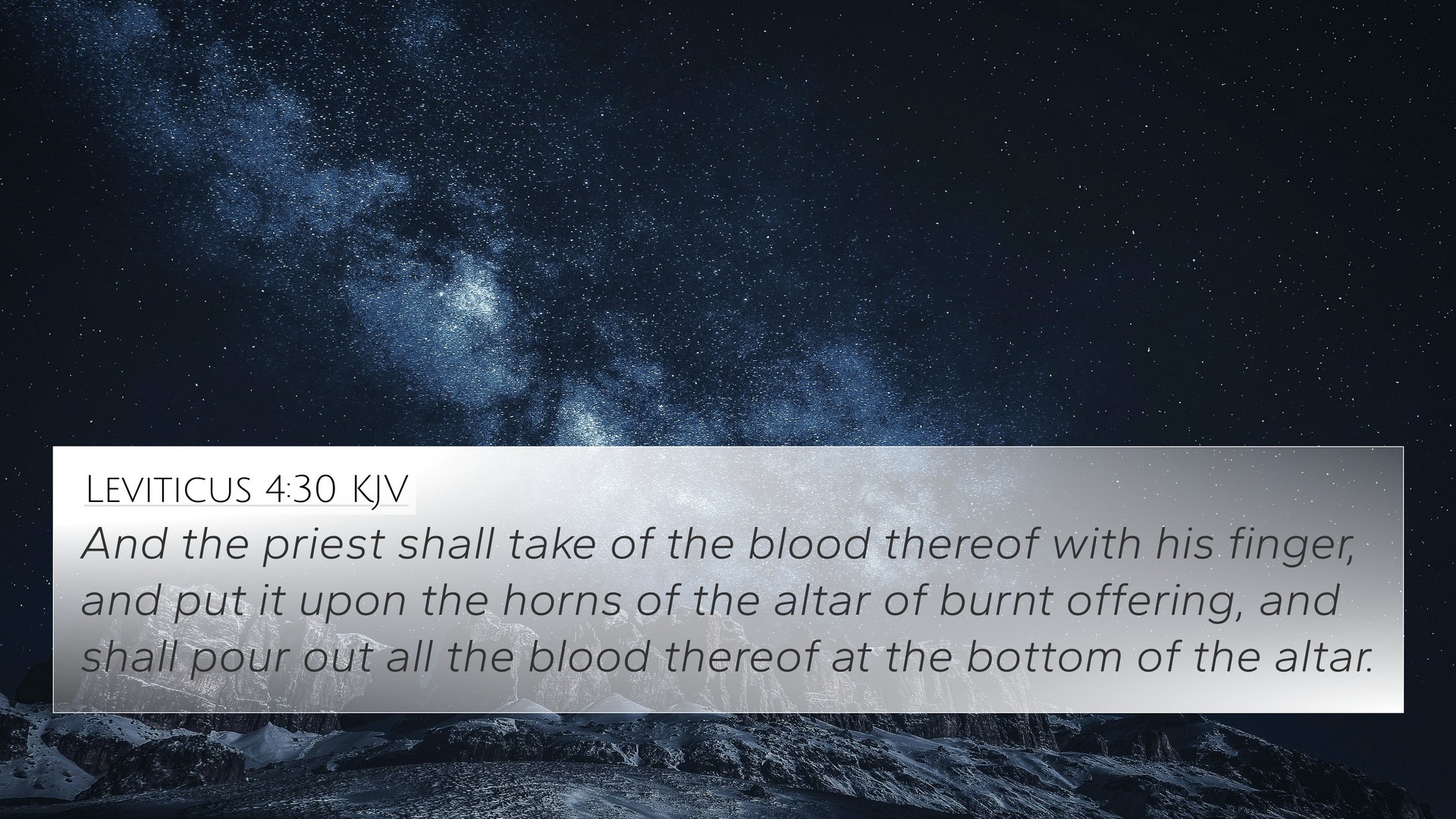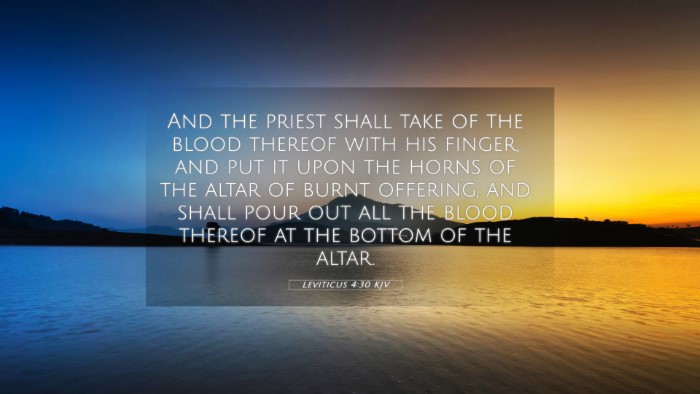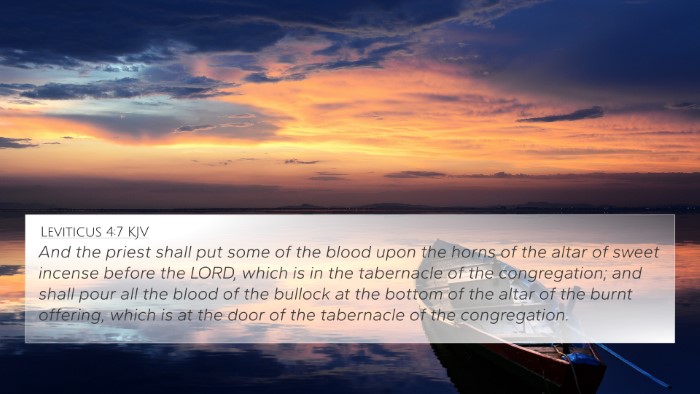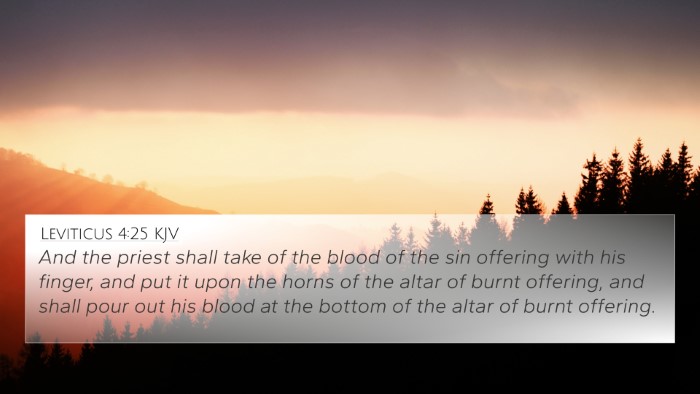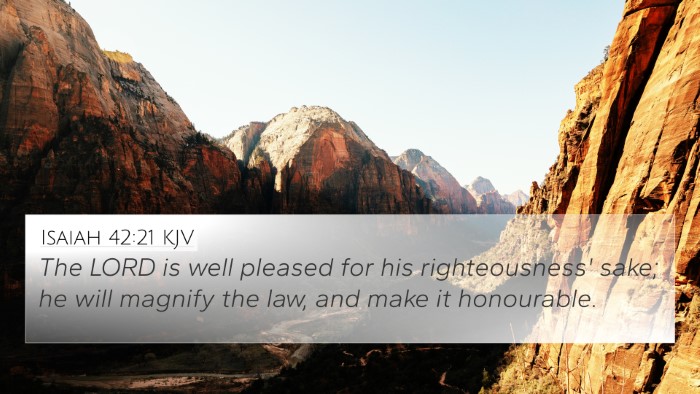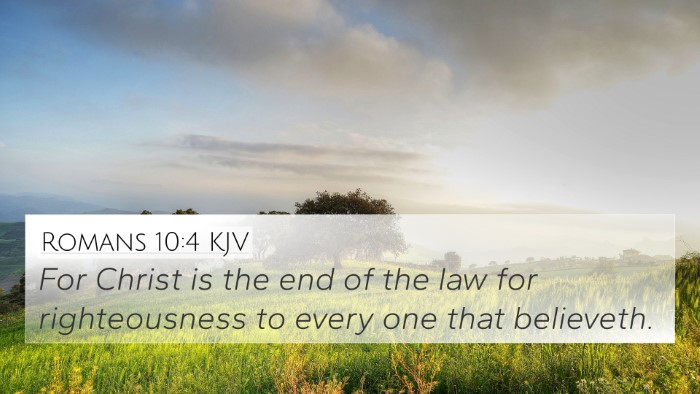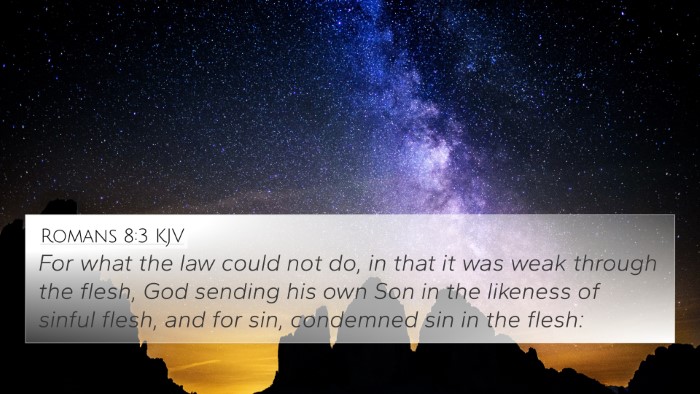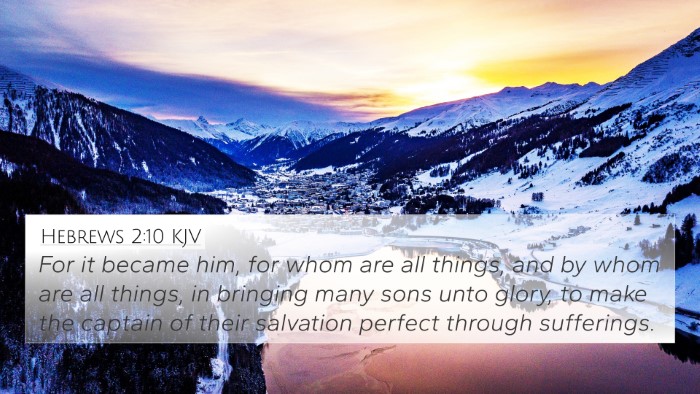Understanding Leviticus 4:30
Leviticus 4:30 states: "And the priest shall take of the blood thereof with his finger, and put it upon the horns of the altar of burnt offering, and shall pour out his blood at the bottom of the altar of burnt offering." This verse reveals significant insights into the sacrificial system established in the Old Testament, particularly regarding the atonement for sin.
Summary of the Verse Meaning
The sacrificial system plays a crucial role in the Old Testament as it underscores the seriousness of sin and the need for atonement. In Leviticus 4:30, the priest's action of taking blood, applying it to the altar's horns, and pouring the remainder at the base symbolize the offering's acceptance by God and the cleansing from sin.
Commentary Insights
- Matthew Henry: Henry emphasizes the importance of the blood in the sacrificial ceremony, noting that it represents life itself. The act of applying blood to the altar signifies the believer’s acknowledgment of their sin and the divine provision for atonement.
- Albert Barnes: Barnes notes that using the blood to touch the altar highlights the need for a mediator (the priest) in the process of reconciliation with God. The pouring of blood represents the complete surrender of life to God as well as the removal of guilt.
- Adam Clarke: Clarke elaborates on the significance of the altar as a place of sacrifice which connects humans to God. He mentions that the ritual exemplifies faith in God's promise of redemption and the need for external manifestations of inward repentance.
Historical Context
The instruction given in Leviticus reflects Israel's spiritual practices during a time when sacrifices were the primary means to approach God. The detailed regulations were provided to maintain a holy standard among the people and to emphasize God's righteousness.
Bible Verse Cross-References
Leviticus 4:30 can be cross-referenced with several other scriptures that highlight similar themes of sacrifice and atonement. Here are some relevant Bible verses:
- Exodus 29:12: Discusses the act of placing the blood on the altar.
- Hebrews 9:22: States that without the shedding of blood, there is no forgiveness of sin, connecting New Testament understanding back to Levitical law.
- Leviticus 17:11: Highlights the theological principle that blood is essential for atonement.
- Romans 3:25: Discusses Jesus' role as a propitiation through His blood, linking the old sacrifices to the ultimate sacrifice.
- 1 Peter 1:19: Identifies Christ as the Lamb without blemish, emphasizing the significance of sacrificial blood.
- Isaiah 53:5: Prophecies about the suffering servant whose wounds bring healing, embodying the essence of sacrifice.
- Hebrews 10:4: Reinforces that the blood of bulls and goats cannot take away sins, contrasting Old Testament sacrifices with Christ’s sacrifice.
Thematic Bible Verse Connections
This verse and its context serve as foundational for understanding the theme of atonement and the holiness of God. It provides critical connections to various other biblical texts that address sin, redemption, and God's covenant with humanity.
Connections Between Bible Verses
Leviticus 4:30 serves as a crucial link in the overarching narrative of scripture. The thematic connections between the Old and New Testaments can be drawn through the exploration of the meaning of sacrifice and blood atonement.
Conclusion
The significance of Leviticus 4:30 extends beyond its immediate context, serving as a cornerstone for understanding the need for restitution in the face of sin through the lens of both the Old Testament covenant and the New Testament fulfillment in Christ. Through cross-referencing these verses, one can gain deeper insights into the continuous thread woven throughout scripture that speaks of God's plan for redemption.
Tools for Bible Cross-Referencing
For those interested in further exploring the connections between Bible verses, several tools and methods can assist in this undertaking:
- Use a Bible concordance to find various references associated with specific terms and themes.
- Consider a Bible cross-reference guide available in many study Bibles to see how individual verses relate to others.
- Engage in cross-reference Bible study methods to deepen your understanding of theological themes.
